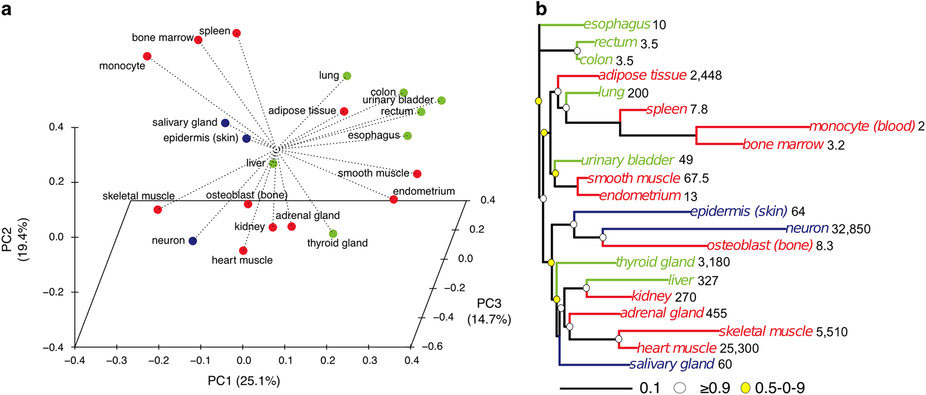ヒトの細胞と組織の長寿を示す遺伝子発現シグネチャー
Gene expression signatures of human cell and tissue longevity
2016年7月7日 npj Aging 2, Article number:16014 (2016) doi:10.1038/npjamd.2016.14
細胞の寿命:遺伝子発現パターンに反映される組織の回転

ヒトの組織および細胞の種類は、細胞の寿命に基づいて異なる遺伝子シグネチャーを示す。ハーバード大学医学系大学院ブリガム・アンド・ウィメンズ病院のVadim Gladyshevらは、細胞の回転周期が2日(白血球)から一生涯(ニューロン)という21種類の異なる細胞型の遺伝子発現パターンを解析した。細胞の増殖と死とのバランスとして定義されるこの回転は、細胞の寿命を的確に推定するものであることが示されている。今回の研究では、筋肉や脳の細胞のように寿命の長い細胞系統は、細胞分裂の促進やゲノムの忠実度の維持に関与する遺伝子が低発現であり、長寿への分子的経路と整合することが明らかにされた。細胞が系統特異的な戦略を用いて寿命を変化させるという今回の知見は、遺伝子発現プロファイルを改変することによってヒトの寿命を延長する未来の治療のための基礎を築くものである。
Cellular lifespan: Tissue turnover reflected in gene expression patterns
Human tissue and cell types exhibit different gene signatures based on their cellular lifespans. Vadim Gladyshev and colleagues from Brigham and Women’s Hospital, Harvard Medical School, analyzed the gene expression patterns of 21 different cell types with cellular turnover times ranging from 2 days (white blood cells) to a lifetime (neurons). This turnover–defined as the balance between cell proliferation and death–has been shown to be a good estimate of cellular lifespan. The authors found that long-lived cell lineages, including those of the muscle and the brain, showed lower expression of genes involved in promoting cell division and maintaining genomic fidelity, consistent with a molecular path toward longevity. The finding that cells use lineage-specific strategies to alter their lifespans lays the groundwork for future therapies that promote human longevity by modifying gene expression profiles.

